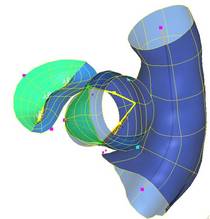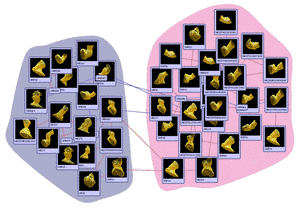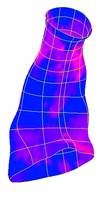Dipl.-Ing. Ingmar Voigt
Alumnus of the Pattern Recognition Lab of the Friedrich-Alexander-Universität Erlangen-Nürnberg
Learning discriminative distance functions for valve retrieval and improved decision support in valvular heart disease
Disorders of the heart valves constitute a considerable health problem and often require surgical intervention. Recently various approaches were published seeking to overcome the shortcomings of current clinical practice, that still relies on manually performed measurements for performance assessment. Clinical decisions are still based on generic information from clinical guidelines and publications and personal experience of clinicians. We present a framework for retrieval and decision support using learning based discriminative distance functions and visualization of patient similarity with relative neighborhood graphs based on shape and derived features. We considered two learning based techniques, namely learning from equivalence constraints and the intrinsic Random Forest distance. The generic approach enables for learning arbitrary user-defined concepts of similarity depending on the application. This is demonstrated with the proposed applications, including automated diagnosis and interventional suitability classification, where classification rates of up to 88.9% and 85.9% could be observed on a set of valve models from 288 and 102 patients respectively.



Voigt, Ingmar; Vitanovski, Dime; Ionasec, Razvan Ioan; Tsymbal, Alexey; Georgescu, Bogdan; Zhou, Shaohua Kevin; Huber, Martin; Navab, Nassir; Hornegger, Joachim; Comaniciu, Dorin
Learning discriminative distance functions for valve retrieval and improved decision support in valvular heart disease In: Haynor, David R.; Dawant, Benoit M. (Eds.)
Proceedings of SPIE Medical Imaging 2010 (SPIE Medical Imaging 2010 San Diego, CA, USA 12.-17.02.2010) 2010, pp. no pagination (BiBTeX, Who cited this?)
- ePractice.eu Library entry:
 http://www.epractice.eu/en/library/312610
http://www.epractice.eu/en/library/312610 - EuroNews featured article:
 http://www.euronews.net/2009/06/17/new-frontiers-of-imaging-the-human-body/
http://www.euronews.net/2009/06/17/new-frontiers-of-imaging-the-human-body/
Part of this work has been done in the framework of the EU project ![]() Health-e-Child (IST 2004-027749).
Health-e-Child (IST 2004-027749).




